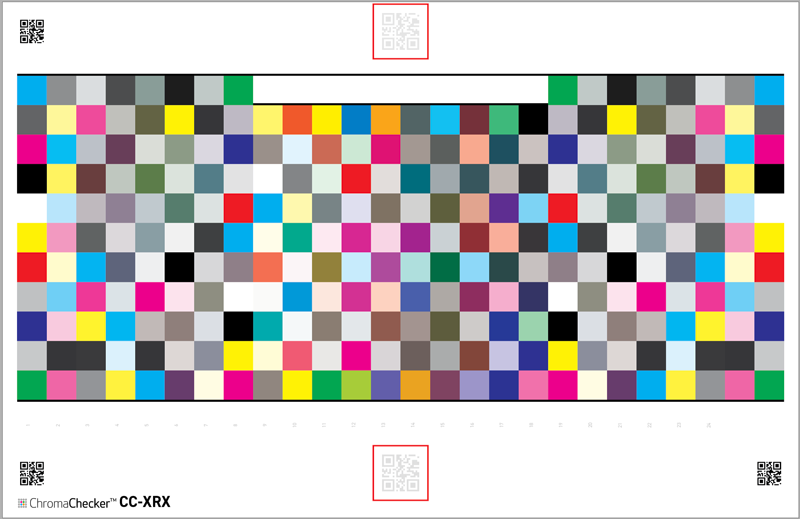CC-XRX Project
This is a draft of the implementation. We are checking all critical components and analyzing variables and processes. This draft covers:
ChromaCheck — Application Interface
(available from Xerox App Gallery)
The Operator should have in the Interface the following options:
- Print Test chart
- Scan Test chart
- Register Event (list of predefined events with potential comments)
- Message board (task to do, guidelines, comments from the system or manager, ...)
- Advanced Function ( Scanner Calibration, Substrate Calibration, ...)
The "Print Test chart" button
When selected - a list of Substrates defined for the Printer will be displayed - The Operator has to select one. The CC Server will generate a unique PDF (with unique QR codes), valid for a limited time ( e.g 10 minutes). This unique code will be used for the verification and we can expect the task for processing - so we can better plan which server should process the file. Additionally, in such cases, there is no way to cheat the system by scanning perfectly printed sheets from the past...
Q: In stage one, we will ask them to only use one "Calibrated substrate" for all evaluations. Keeping it simple is paramount.
The "Scan Test chart" button
This will activate a process of scanning with some guidelines for the operator. The front-to-back evaluation can be performed - and the system will ask operator to use Varnish Marker on two red squares. For lightweight papers that is enough to locally reduce the opacity so the QR code printed on the back side becomes readable (with some image processing that CC Software will do).
 |
This is a schema of method — a black QR code is printed on the backside; Varnish Marker is used to decreasing substrate opacity; on this simulation — for demonstration purposes — it is shown as light gray. |
Once the front side is scanned - files are transmitted for evaluation to one of the servers. ChromaChecker Calculation Instance will be able to analyze TVI curves, Grey Balance, and Tonality, and evaluate print to the baseline. Based on the Tolerance Set system can qualify Pass/Fail Examination and calculate E-Factor as a numeric score.
TestChart contains repeated patches of the same build - The calculation engine evaluates variations for every primary and secondary color and some tints. This creates a report on the intra-page uniformity - and can be used to detect some specific issues.
The process of picture analysis should create statistical parameters, which should reflect single patch uniformity to detect issues.
In the next generation, software should be able to learn different types of issues (AI), and with the help from engineers, we believe that at least a couple of issues can be classified and specific guidelines for the operator can be formulated (replace the black drum or perform any other maintenance procedure.
Q: Initial rollout tolerance will be very high, like E-Factor = 9 to learn what is normal before lowering the tolerance
The "Register Event" button (Version 2 unless this is perceived as very valuable)
The Operator may use this to send the message to the system - some maintenance was performed - e.g. Calibration procedure successfully performed... or Cyan toner replaced...
All events can be placed on the timeline and managers can be informed that the printer is properly maintained or the Operator noticed something that may be important - the list of events should be prepared with engineers and managers.
Message board
Is a part of the application screen where system messages can display important notifications for the Operator
The message board will display Pass/Fail Report and can show a progress bar - as remote analysis and potential issues when the internet connection slows down. If verification fails - it should give guidelines - on how to fix the issue.
Q: We need to know potential classes of errors and procedures/guidelines for the Operator to display
The "Advanced Function" button
(might be hidden - and require a specific action to activate)
The Scanner/Printer may need periodical verification or calibration (for the ChromaChecker calculation engine). This part might be used by the more advanced Operators or service technicians if the system detects abnormal behavior.
This module in the next generation should make it possible to define new substrates.
Communication
App —> Send Printer ID - based on this information main server is checking which cloud instance is assigned to (at first step one server instance - but as the system will grow more might be required).
Q: Do we need the Operator to use credentials to log in? Can we authorize on Printer ID only? Is it safe?
Related Topics
Contact ChromaChecker Support
Additional information and Support Form is available for logged users.